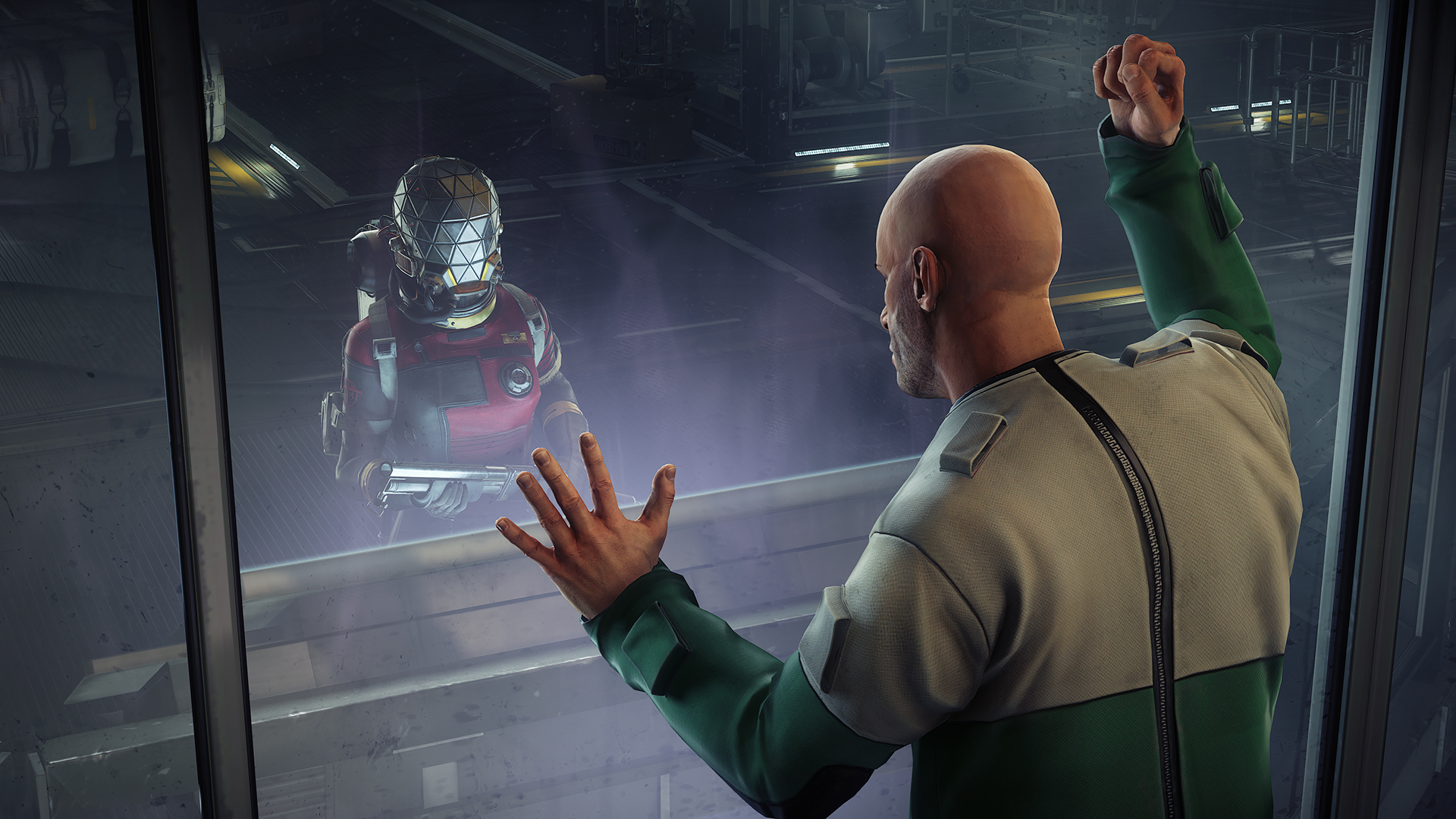One tense hour in Prey's creepy Psychotronics Lab
In search of the G.U.T.S of the Talos One.

Since Dishonored released in 2012 I’ve longed for Arkane to make the exact same game without all the steampunk trappings. Don’t get me wrong: I believe steampunk has a right to exist. But I’d prefer it to not exist while I’m around.
After spending roughly two hours with Prey I can confirm that both myself and anyone else with similar feelings will likely be satisfied with what this game is, that being a dark science fiction immersive sim. The genre doesn’t lack science fiction settings, but given Arkane’s pedigree it’s sensible to expect they’ll do it better than most of the competition.
James played the opening hours of Prey recently and provided a good overview of what the game is. As for me, I played a little way into the game, at a point where protagonist Morgan Yu is forced to navigate (for some reason unbeknownst to me) an especially dangerous region of the Talos One space station known as Psychotronics. The name does not imply serenity. According to an AI voice in my ear known as January, I need to get the hell out of there, as quickly as possible, through a maintenance airlock and into a utility tunnel known as G.U.T.S. That name does not imply serenity, either, but it actually stands for 'Gravity Utility Tunnel System' and is presumably used to access different parts of the station.
Nope.
Aside from being a decrepit space station and not, as in Dishonored, a sun-drenched city, there are some satisfying departures from the former game’s structure. Chiefly, Talos One is a hellhole to be escaped rather than a city to be admired, and indeed, escaping is Morgan Yu’s primary objective. Decrepit space stations are difficult to escape though, thanks to their being labyrinthine, riddled with remnant security measures and, crucially, suspended in space. As a result, Prey’s Talos One feels like a feasible location, rather than a hub-and-spoke world design. The art deco-inspired futurism is both eerie and oppressive.
Overall, wandering the Psychotronics area—with its ruined morgues, yellow-lit enclosure warehouses and decayed bathrooms—reminded me most of Alien: Isolation. Except in Prey, the horror element is subordinate to Prey’s less punishing approach to combat. In other words: it’s much less of a pain to kill the creatures in Prey. Gas them with a GLOO cannon to freeze them in place, then whittle their health down with a wrench or pistol. I didn’t find any creature encounters especially stressful to be honest, and in my experience being loud didn’t bring the whole local monster populace bearing down on me. I didn’t feel a huge need to creep around, except when this electrified monstrosity one-shotted me.
In order to access the G.U.T.S entry I needed to calibrate my Psychoscope, a tool you’ll use to assess enemy strengths and weaknesses as well as learn about all manner of objects strewn throughout the world. Scanning enemies and learning about them enables Morgan to unlock abilities belonging to that beast, which is how most of Prey’s interesting powers get unlocked. I unlocked the Kinetic Blast towards the end of my playthrough, which allowed me to, uh, kinetically blast enemies and objects away from me. Once discovered, you unlock them using Neuromods, which can be collected throughout the station.
Other tools facilitate more interesting traversal: there’s a boltcaster which, though useless on enemies, can be fired through otherwise un-passable obstacles to trigger switches from a distance, or else to distract enemies. And then there’s the Mimic ability which, though I didn’t unlock it, is what lets you turn into a coffee cup, among virtually every other thing.
While combat situations feel less fraught than in the likes of Deus Ex and Dishonored, the environment itself exudes a tension which can result in some unusual role-playing. At one point, discovering a “homosapien” prisoner deep in the Psychotronics lab, I freed him in order to gain access to an armory. Although I’m normally inclined to play nice in games that grant me the option, the shapeshifting nature of Prey’s foes had me seriously wondering whether to let the guy live. In the end, I didn’t. “Did you hesitate… at all?” omnipresent voiceover ghost January asked me. “I’m sure he wasn’t a good man, but… would you have done otherwise, given the opportunity?” Morgan didn’t answer and, frankly, neither did I. And anyway, he’s dead.

The mood is sterner, more austere than Dishonored’s capers, but once the gloom of the environments is processed it’s hard to shake the impression – during my short playthrough at least—that the stakes aren’t quite as high. Despite looking more tense, Prey may very well end up being a more meditative game than its stablemate. Given the setting and my preference for science fiction, I spent a whole lot more time reading and taking in the sights, which I tend to ignore in other games. I didn’t get to fiddle with all of Prey's most interesting abilities, but I also didn’t feel like I really needed to. Given the amount of ability-gated passages dotting the map, there is freedom here. I just didn’t feel particularly punished for taking the most obvious route.
I like this about it, though. While there were avenues I could have, but didn’t, explore in the Psychotronics area, I didn’t have the anxiety hanging over me that I was missing out. It felt more “do it the best way you can” rather than, “do it this way, and then do it another way on your next playthrough”. My gut feeling is that Prey's world will be more taut and cohesive than the comparative sprawl of Dishonored—think, of course, System Shock—and its Metroidvania-esque approach to exploration is befitting a game set in such claustrophobic environs.
The biggest gaming news, reviews and hardware deals
Keep up to date with the most important stories and the best deals, as picked by the PC Gamer team.

Shaun Prescott is the Australian editor of PC Gamer. With over ten years experience covering the games industry, his work has appeared on GamesRadar+, TechRadar, The Guardian, PLAY Magazine, the Sydney Morning Herald, and more. Specific interests include indie games, obscure Metroidvanias, speedrunning, experimental games and FPSs. He thinks Lulu by Metallica and Lou Reed is an all-time classic that will receive its due critical reappraisal one day.

